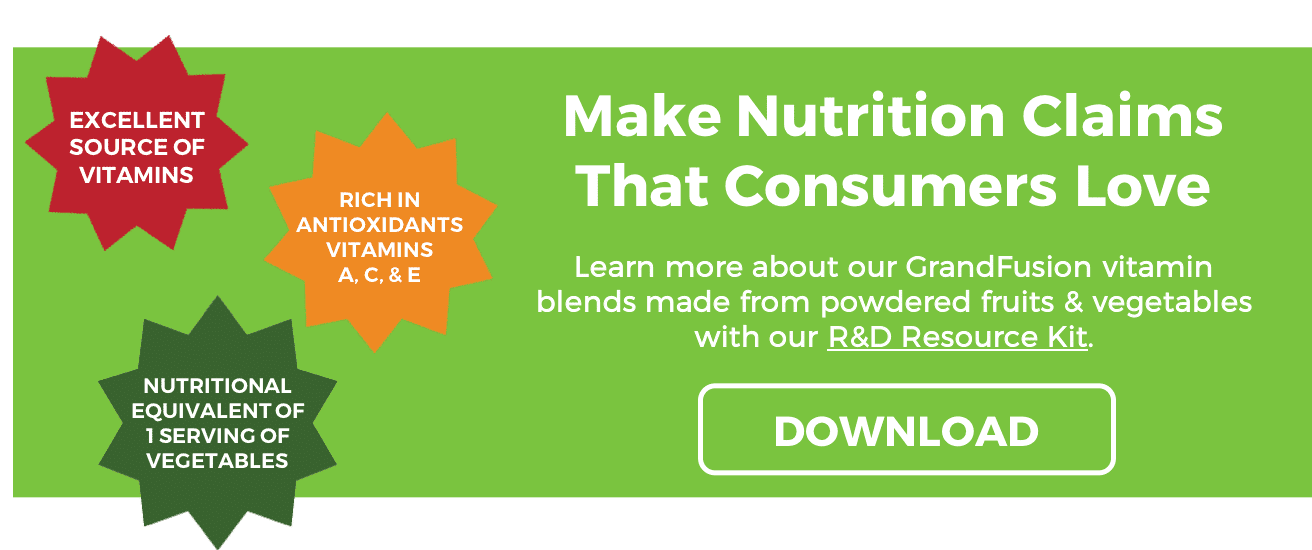Mintel’s 2017 Global Food and Drink Industry Trends
Now that 2016 is over, it’s time to look at the food and beverage trends shaping up to make an impact in 2017. Mintel recently announced the top six trends that they believe will see fast growth this year. Check out their predictions below!
1. Traditional Processing
While our food today is made using modern processing, many people are now opting for foods made by conventional processing techniques. Companies are looking at using age-old formulation as well as classic flavors. People tend to view these foods as safe, reliable, and recognizable. This trend can be attributed to the recent rise of ancient recipes, cooking practices, and traditions that have resurfaced to incite the feeling of familiarity in the kitchen and food.
2. Plant-Based Formulation
Plant-based diets are becoming more popular, and Mintel expects this to be a huge area for growth in the industry. As a result, the food and drink industry is developing more products that emphasize using plant-based ingredients. This trend will not only be perfect for vegans and vegetarians but also flexitarians. We predict there will be an increased consumption of vegetables, fruits, seeds, nuts, grains and other botanical products.
3. Zero Food Waste
The year 2017 will be the year of the environment. But how does that relate to food? The answer is zero food waste. Today, many food manufacturers and restaurant owners want to address the growing problem of food waste. There will be an increasing awareness among people to use “ugly” produce as well as repurposing food ingredients to avoid wastage.
4. Night Shift Market
In today’s fast-paced life, many people have to work at night when we are all asleep. This lifestyle creates a new market niche for food manufacturers. Companies are developing products that are solely dedicated to nighttime workers as well as those who stay up late at night. Products such as teas made from lavender and chamomile are now introduced to night owls so that they can relax better just before their bedtime.
5. Healthy Food for Everyone
In the past years, only people from the higher income brackets could afford to eat healthily. Fortunately, 2017 will be the year when even lower-income consumers can afford to eat healthily. 2016 helped drive this change with companies like Annie’s leading the Everybunny campaign and other organizations lobbying for subsidized fruits and vegetables to keep prices low.
6. Convenient Healthy Foods
Convenience has been driving change in food for over 30 years, but the new opportunity is in creating fast, healthy foods. People want to eat food conveniently so many food and drink manufacturers are developing new ways to deliver their products faster without compromising the taste and nutritional content.
If you have noticed, the trends of 2017 revolve around the idea of eating convenient, healthy, and reliable foods. It’s not that surprising if you’ve watched the market over the past few years. It will be interesting to see which companies take advantage of these growth opportunities in 2017 and beyond.
Inspired by www.mintel.com

 Sensient Natural Ingredients, a company in Turlock in California, manufactures fruit and vegetable powders. They use methods like air, vacuum, and freeze drying. The drying technique employed depends on the types of ingredients used. For instance, air drying is utilized to dry herbs while vacuum drying is used to retain more nutrients from the dried food.
Sensient Natural Ingredients, a company in Turlock in California, manufactures fruit and vegetable powders. They use methods like air, vacuum, and freeze drying. The drying technique employed depends on the types of ingredients used. For instance, air drying is utilized to dry herbs while vacuum drying is used to retain more nutrients from the dried food. Over the next ten years, we will see a lot of fruits and vegetables turned into powder for nutrition, flavor, and texture in our packaged foods. One of the reasons why this trend will continue to flourish is because of the convenience. Whole food powders like NutriFusion tend to last for a long time without losing their nutritional value. They can be used in augmenting the nutrient content of the food that you are cooking or can be utilized as emergency food.
Over the next ten years, we will see a lot of fruits and vegetables turned into powder for nutrition, flavor, and texture in our packaged foods. One of the reasons why this trend will continue to flourish is because of the convenience. Whole food powders like NutriFusion tend to last for a long time without losing their nutritional value. They can be used in augmenting the nutrient content of the food that you are cooking or can be utilized as emergency food.
 FDA Issues Public Warning
FDA Issues Public Warning Founded two years ago, the Clean Label Project is a non-profit group that is concerned about the purity and safety of today’s food. It is led by people from all walks of life, but most of them have a background in the food industry. The group aims to answer questions related to the origin of our foods and increase the transparency of food issues such as GMO labeling, revamping the nutrition facts, and implementing the Food Safety Modernization Act.
Founded two years ago, the Clean Label Project is a non-profit group that is concerned about the purity and safety of today’s food. It is led by people from all walks of life, but most of them have a background in the food industry. The group aims to answer questions related to the origin of our foods and increase the transparency of food issues such as GMO labeling, revamping the nutrition facts, and implementing the Food Safety Modernization Act. Clean labeling is not just about knowing the types of ingredients used in making a particular food product. It also knows where your food comes from and how it is made with the Clean Label Project, the non-profit organization aims to transform how people look at the concept of clean labeling.
Clean labeling is not just about knowing the types of ingredients used in making a particular food product. It also knows where your food comes from and how it is made with the Clean Label Project, the non-profit organization aims to transform how people look at the concept of clean labeling.
